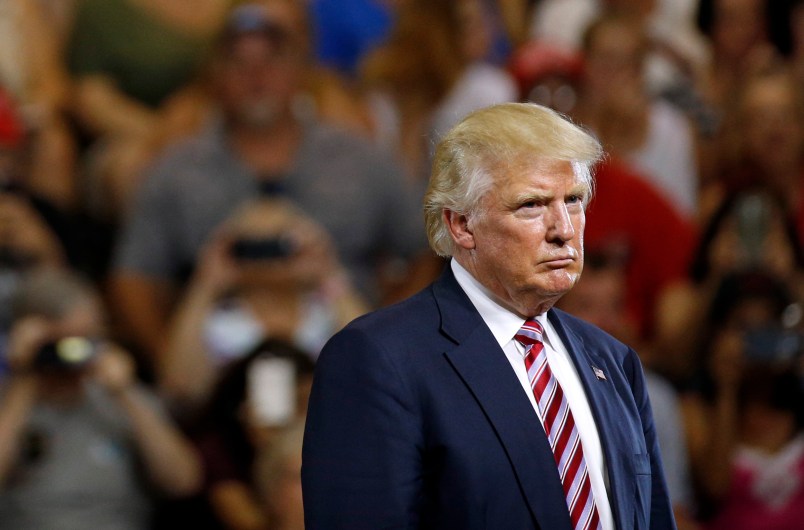Donald Trump doesn’t consider Supreme Court Justice Ruth Bader Ginsburg’s statement of regret for criticizing his campaign to be an apology, but he said in a Thursday interview they “have to move on anyway.”
Trump said on “The Herman Cain Show” that he found Ginsburg’s criticisms of his campaign “disappointing,” according to a report from The Hill.
“The Supreme Court is above that kind of rhetoric, those words,” he said. “But she acknowledged she made a mistake and I’ll accept that.”
“It wasn’t really an apology, but we have to move on anyway. It’s just something that should not have taken place,” he added, as quoted by The Hill.
Ginsburg released a statement on Thursday expressing “regret” for what she described as “ill-advised” remarks, but stopped short of a full apology.
Earlier in the week, the justice joked about moving to New Zealand if Trump won the election. She went on to call him a “faker” with “no consistency.”
In response, Trump called for Ginsburg’s removal, saying that her outspoken criticism was a “disgrace to the court” and tweeting that her “mind is shot.”
His comments were echoed by The New York Times’ editorial board in a piece describing Ginsburg’s comments in the midst of the election as “baffling.” Experts told TPM that Ginsburg’s break with tradition, while unexpected, did not break any rules governing judicial impartiality.







Let’s compare it to all of Trump’s apologies.
Trump: “Her mind is shot, so I guess that is all I could hope for”
For what it’s worth, Donald, ya no-good bhoyo, I don’t think it’s really an apology either.
I was looking for the Howie Carr quote…but this will do.
Trump is correct, it was not an apology for saying what she said about him. RBG expressed regret for stepping outside the bounds of a sitting jurist to express a political opinion. This was an appropriate thing to do, but please note that she did not take back,nor in any way recant her criticism of the Trumpster. Good for her!